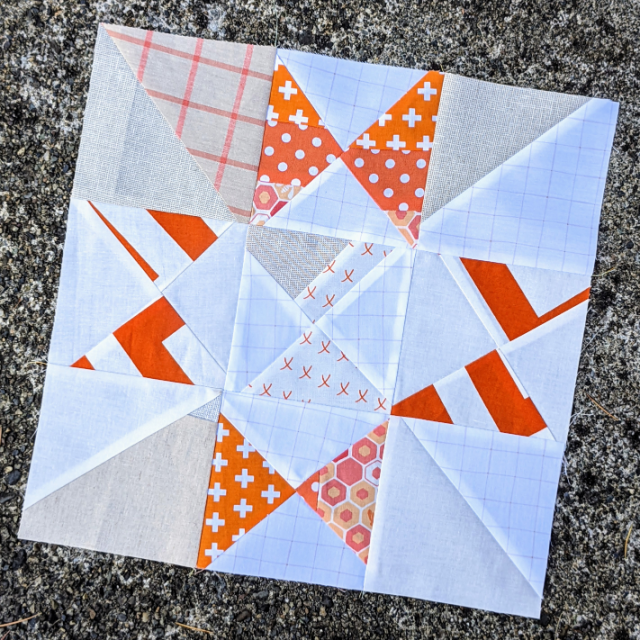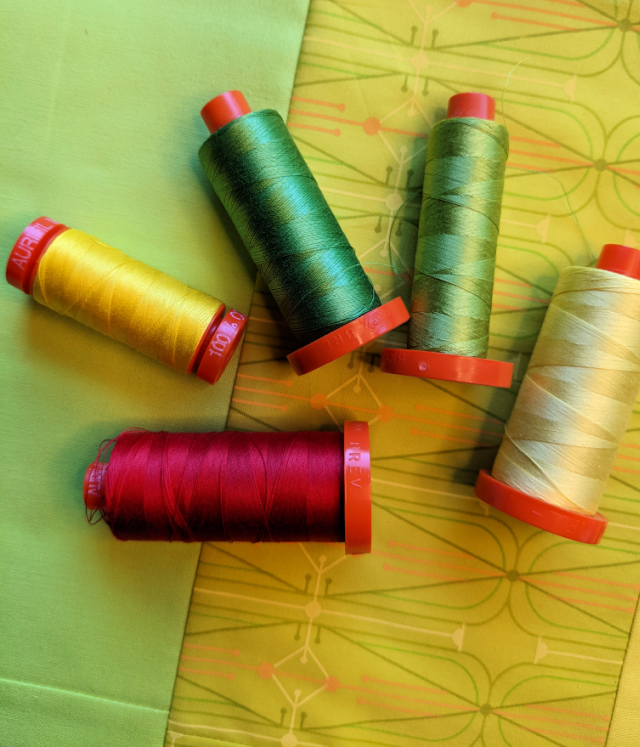Once again, I snuck in a few small projects during the month - the first two were things I actually needed and am using; the third just to try out a new-to-me pattern. First up were a pair of "Scissor Holsters," inspired by a pattern in Kraft-tex Style by Roxane Cerda. I'd been wanting scissor guards for the little snips I keep in my handwork bags, and using kraft-tex as a base was perfect, plus I already had some on hand from making quilted bookmarks. Admittedly I made them my own by incorporating leather scraps sewn onto a kraft-tex backing, and also using my leather stamps, which is always fun. The text isn't too visible in the photos, but I can see it just fine as I'm using the scissor holders.
I used Aurifil Forty3 thread with Aurifil 40wt in the bobbin, and the pair worked wonderfully, even with all those layers.And lastly, I couldn't resist grabbing some scraps and making a pair of quarter-circle potholders using Irina/ @nordiccrafter's unique design.
So that's that. I'm just starting in on quilting my Old Italian block quilt, but already have at least one new "small item" I want to make in September. Undoubtedly, there will be more....










e640.png)









e640.png)
































